On this page you find a list of Laka publications in chronological order.
A short introduction of each publication is given; on this English page only for publications published in English. If you're looking for introductions on Dutch reports, please visit the Dutch version of this page.
Books, brochures and other publications
 So how flexible is nuclear power in France now really?
So how flexible is nuclear power in France now really?
august 2022
Laka sometimes gets the question that if nuclear power plants in France can be used flexibly, can nuclear power not be used as a intermittent source of electricity, complementing wind and solar?
The short answer then is, that if nuclear power plants can be used flexibly, it does not mean that in France nuclear power plants will come to the rescue as soon as the sun sets. Coincidentally, Dutch nuclear energy research center NRG recently reported that they are investigating precisely this for French EDF: How to make nuclear fuel more resistant to "transients" (changes in reactor power), because, according to experts at NRG: "At the moment, [French] nuclear power plants are designed to operate at a constant power: it's on or off."
 20 Jaar Pallasreactor. Een analyse van veranderende omstandigheden
20 Jaar Pallasreactor. Een analyse van veranderende omstandigheden
Juni 2022
in Dutch only
 Innovatie in medische isotopenproductie zonder kernreactor.
Innovatie in medische isotopenproductie zonder kernreactor.
Overzicht van versnellerisotopen, nieuwe productiemethoden, en nieuwe ontwikkelingen in isotopenproductie met versnellers
Februari 2021
in Dutch only
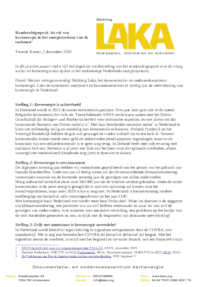 Positition paper rondetafelgesprek over de rol van kernenergie in het energiesysteem van de toekomst
Positition paper rondetafelgesprek over de rol van kernenergie in het energiesysteem van de toekomst
Tweede Kamer, december 2020
in Dutch only
 Urenco 1970-2020: From Treaty of Almelo to Atom Ausstieg
Urenco 1970-2020: From Treaty of Almelo to Atom Ausstieg
(October 2020)
On March 4, 1970, the Treaty of Almelo was signed ‒ an agreement between the Netherlands, the United Kingdom and West Germany on setting up a company with the aim of enriching uranium: Urenco. Now, 50 years later, Urenco is a major player on the world market. But those 50 years did not go smoothly and even now the company is under pressure: not only because of the slowdown in the growth of nuclear energy, resulting in large overcapacity in the enrichment market and a shrinking order portfolio, but also due to the German Atom Ausstieg and the decline of nuclear energy in Urenco’s traditional market: Western Europe.
This paper describes the development of uranium enrichment and the turbulent history of Urenco. It further analyzes current issues regarding Urenco and its uncertain future.
[pdf]
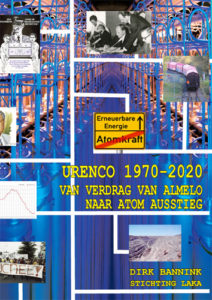 Urenco 1970-2020: Van Verdrag van Almelo naar Atom Ausstieg
Urenco 1970-2020: Van Verdrag van Almelo naar Atom Ausstieg
(maart 2020)
in Dutch only
[pdf]
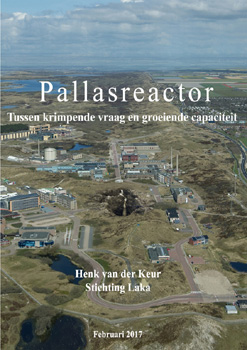 Pallasreactor. Tussen krimpende vraag en groeiende capaciteit
Pallasreactor. Tussen krimpende vraag en groeiende capaciteit
(February 2017)
in Dutch only
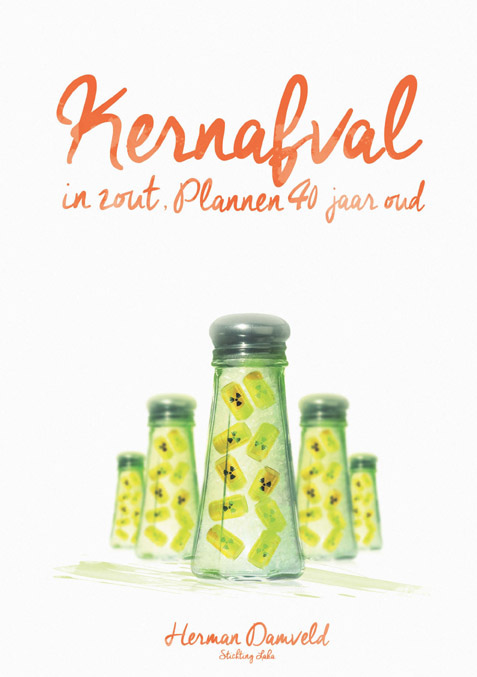 Kernafval in zout. Plannen 40 jaar oud
Kernafval in zout. Plannen 40 jaar oud
(June 2016)
in Dutch only
Not available online. Check this for more information
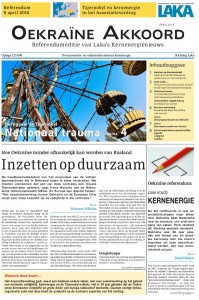 Oekraine akkoord. Referendumeditie van Laka's Kernenergienieuws
Oekraine akkoord. Referendumeditie van Laka's Kernenergienieuws
(April 2016)
In Dutch only
[online version] [download pdf]
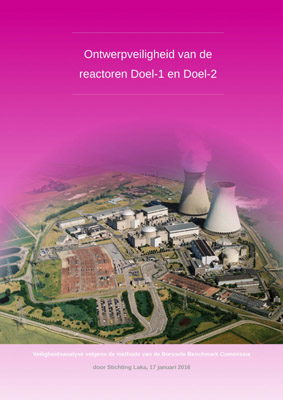 Ontwerpveiligheid van de reactoren Doel-1 en Doel-2. Veiligheidsanalyse volgens de methode van de Borssele Benchmark Commissie
Ontwerpveiligheid van de reactoren Doel-1 en Doel-2. Veiligheidsanalyse volgens de methode van de Borssele Benchmark Commissie
(January 2016)
In Dutch only
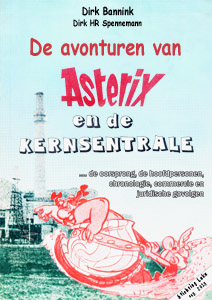 De avonturen van Asterix en de kernsentrale
De avonturen van Asterix en de kernsentrale
(August 2015)
in Dutch only
Not available online. Check this for more information
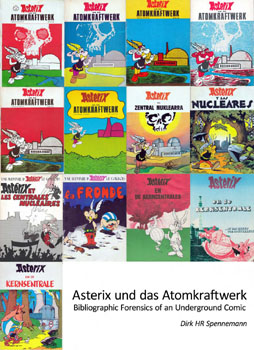
Asterix und das Atomkraftwerk. Bibliograhic Forensics of an Underground Comic [English]
(August 2015)
Asterix und das Atomkraftwerk was first created in Vienna in 1978 by cutting up existing Asterix comic books, rearranging selected panels and adding a new narrative into the speech bubbles. Pirated copies were in circulation in various German towns even before the first German edition was stopped through legal action by the copyright owners of the Asterix brand. Well over 20 German-language print versions have been identified. The volume was translated and adapted to Dutch, French and various dialects Spanish, incl. Basque. A 92-page study from Dirk HR Spennemann: Asterix und das Atomkraftwerk. Bibliographic Forensics of a German Underground Comic.
Not available online. Check this for more information
 Zoutkoepels Noord-Nederland als ondergronds berglandschap
Zoutkoepels Noord-Nederland als ondergronds berglandschap
(February 2015)
in Dutch only
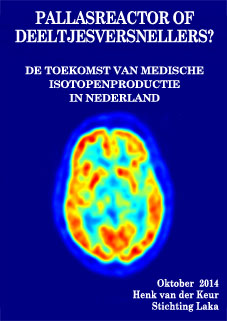 De toekomst van medische isotopenproductie in Nederland: Pallasreactor of deeltjesversneller?
De toekomst van medische isotopenproductie in Nederland: Pallasreactor of deeltjesversneller?
(October 2014)
in Dutch only
 Eindberging radioactief afval: toch in zoutkoepels in Noord-Nederland?
Eindberging radioactief afval: toch in zoutkoepels in Noord-Nederland?
(August 2014)
in Dutch only
 Ontmanteling deeltjesversneller Nikhef. Advies
Ontmanteling deeltjesversneller Nikhef. Advies
(May 2013)
in Dutch only
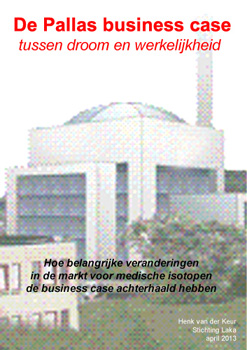 De Pallas business case: tussen droom en werkelijkheid
De Pallas business case: tussen droom en werkelijkheid
(April 2013)
in Dutch only
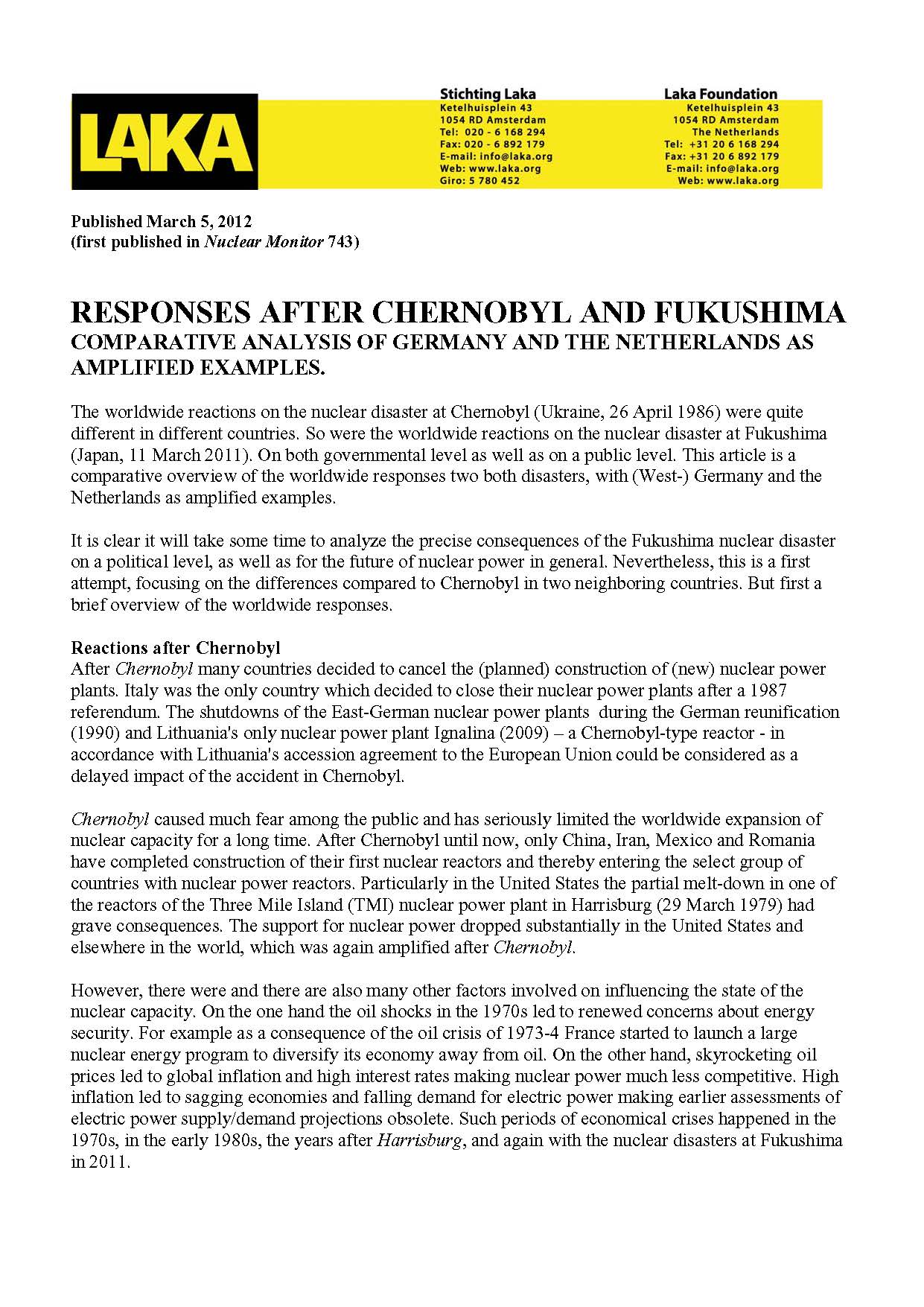 Responses after Chernobyl and Fukushima. A comparative analyses of Germany and The Netherlands [English]
Responses after Chernobyl and Fukushima. A comparative analyses of Germany and The Netherlands [English]
(March 2012)
The worldwide reactions on the nuclear disaster at Chernobyl (Ukraine, 26 April 1986) were quite different in different countries. So were the worldwide reactions on the nuclear disaster at Fukushima (Japan, 11 March 2011). On both governmental level as well as on a public level. This article is a comparative overview of the worldwide responses two both disasters, with (West-) Germany and the Netherlands as amplified examples. It is clear it will take some time to analyze the precise consequences of the Fukushima nuclear disaster on a political level, as well as for the future of nuclear power in general. Nevertheless, this is a first attempt, focusing on the differences compared to Chernobyl in two neighboring countries.
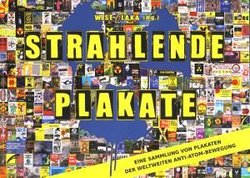
Strahlende Plakate. Eine sammlung von Plakaten der Weltweiten Anti-Atom-Bewegung [German]
(July 2011)
An German edition of Radiating Posters. A collection of posters on the Fukushima-tragedy are included in this German edition.
Published in Germany by Unrast
Not available online. Check this for more information
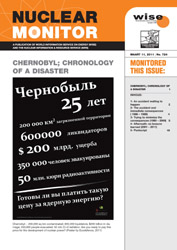 Chernobyl; Chronology of a disaster [English]
Chernobyl; Chronology of a disaster [English]
(February 2011)
Twenty-five years after the start of the nuclear catastrophe at Chernobyl, the Nuclear Monitor published a special issue with a shorty version of the Chernobyl Chronology available at the Laka website. This is the second time a version of the chronology was printed, after the publication in Chernobyl: 20 years - 20 lifes, published by Mads Eskesen in 2006.
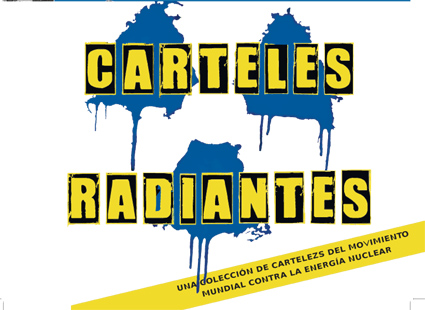 Carteles Radiantes. Una colleccion de carteles del movimiento mundial contra la energia nuclear [Spanish]
Carteles Radiantes. Una colleccion de carteles del movimiento mundial contra la energia nuclear [Spanish]
(February 2011)
A Spanish translation (supplement) of all texts from Radiating Posters.
Not available online. Check this for more information
 Radiating Posters. A collection of posters from the global movement against nuclear power [English]
Radiating Posters. A collection of posters from the global movement against nuclear power [English]
(February 2011)
The book is a compilation of the large cultural heritage of 40 years of global struggle against nuclear energy. The full-color book shows more than 600 posters (from 1970-2010) from 45 countries. The book shows the rich history of the anti-nuclear movement.
Never before such a large collection of anti-nuclear posters was brought together, or, for that matter, of any other societal issue, of so many countries, cultures and of such a long period.
Not available online. Check this for more information
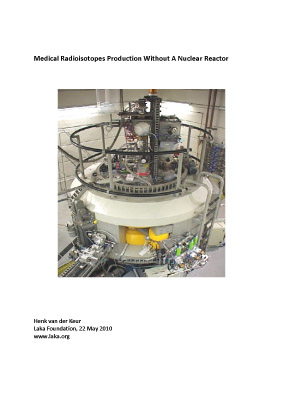 Medical Radioisotope Production Without A Nuclear Reactor [English]
Medical Radioisotope Production Without A Nuclear Reactor [English]
(May 2010)
Currently more than 80% of the medical radioisotopes are produced by research reactors. The remaining isotopes are made by particle accelerators, mostly with circular accelerators (cyclotrons) and sometimes with linear accelerators (linacs), or by other methods. Production of medical isotopes is used by the nuclear industry as public relation for nuclear research reactors. This report is answering the key question: Is it possible to ban the use of research reactors for the production of medical radioisotopes? The answer is 'yes'.
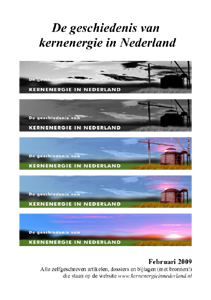 Kernenergie in Nederland
Kernenergie in Nederland
(February 2009)
in Dutch only
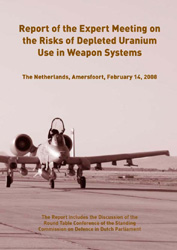 Report of the Expert Meeting on the Risks of Depleted Uranium Use in Weapon Systems [English]
Report of the Expert Meeting on the Risks of Depleted Uranium Use in Weapon Systems [English]
(February 2009)
The Report includes the discussion of the Round table Conference of the Standing Commission on Defence in Dutch Parliament.
The report is partly in English and partly in Dutch.
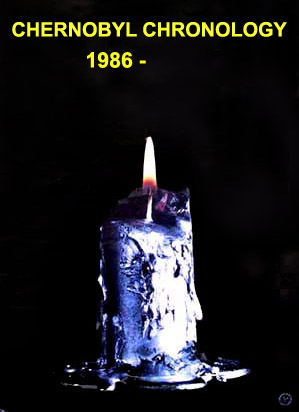 Chernobyl Chronology 1986-2006 [English]
Chernobyl Chronology 1986-2006 [English]
(April 2006)
A very extensive historical overview about Chernobyl: safety doubts pre-1986, the accident itself, the reasons for it, consequences en measurements. Worldwide. Shortened version (published as a special issue of the Nuclear Monitor) of texts available at the Laka webiste dedicated to the Chernobyl disaster. Beautiful website and updated regurlarly
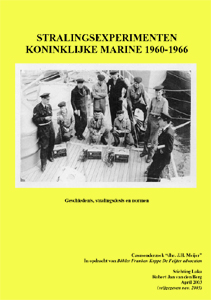 Stralingsexperimenten Koninklijke Marine 1960-1966
Stralingsexperimenten Koninklijke Marine 1960-1966
(2003; released for publication November 2005)
in Dutch only
 Akties tegen kernenergie 1960 - 2004
Akties tegen kernenergie 1960 - 2004
(September 2005)
in Dutch only
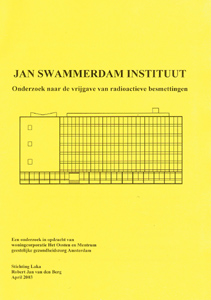 Jan Swammerdam Instituut: Onderzoek vrijgave van radioactieve besmettingen
Jan Swammerdam Instituut: Onderzoek vrijgave van radioactieve besmettingen
(March 2003)
in Dutch only
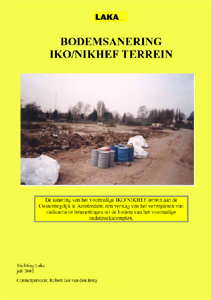 Bodemsanering IKO/NIKHEF terrein
Bodemsanering IKO/NIKHEF terrein
(July 2002)
in Dutch only
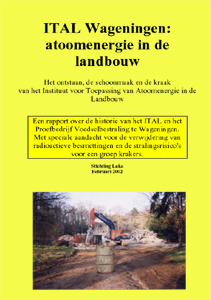 ITAL Wageningen: atoomenergie in de landbouw
ITAL Wageningen: atoomenergie in de landbouw
(February 2002)
in Dutch only
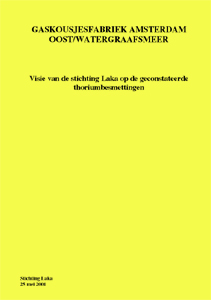 Gaskousjesfabriek Amsterdam Oost/Watergraafsmeer
Gaskousjesfabriek Amsterdam Oost/Watergraafsmeer
(May 2001)
in Dutch only
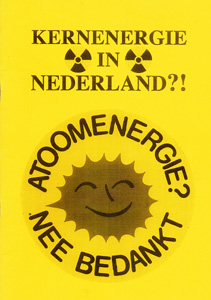 Kernenergie in Nederland?!
Kernenergie in Nederland?!
(April 2001)
in Dutch only
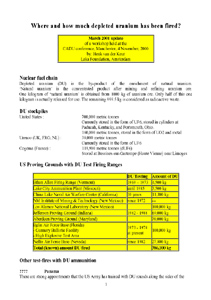 Where and How Much Depleted Uranium Has Been Fired? [English]
Where and How Much Depleted Uranium Has Been Fired? [English]
(March 2001)
An overview of all sites, including testfire ranges and war zone areas where DU antitank shells have been used so far.
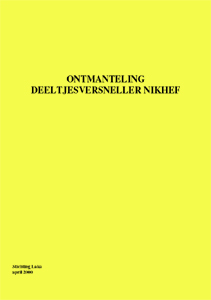 Ontmanteling deeltjesversneller NIKHEF
Ontmanteling deeltjesversneller NIKHEF
(April 2000)
in Dutch only
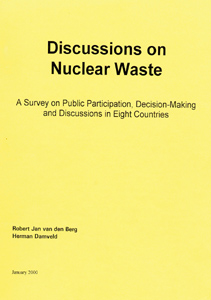 Discussion on nuclear waste:
Discussion on nuclear waste:
A Survey on Public Participation, Decision-making and Discussions in Eight Countries [English]
(January 2000)
An overview on how the public in eight countries was involved in the decision-making process on the destination of nuclear waste: Belgium, Canada, France, Germany, Spain, Sweden, Switzerland and the United Kingdom
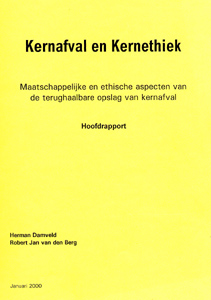 Kernafval en kernethiek - hoofdrapport
Kernafval en kernethiek - hoofdrapport
(January 2000)
in Dutch only
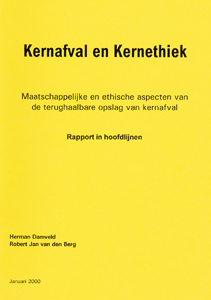 Kernafval en kernethiek - rapport in hoofdlijnen
Kernafval en kernethiek - rapport in hoofdlijnen
(January 2000)
in Dutch only
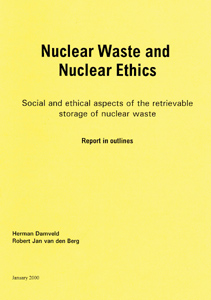 Nuclear Waste and Nuclear Ethics [English]
Nuclear Waste and Nuclear Ethics [English]
(January 2000)
A literature study on the ethics and justification principles on the production and the storage of nuclear waste. Shortened version of the Dutch main report
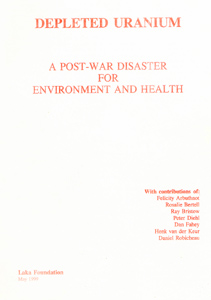 Depleted Uranium. A post-war disaster for environment and health [English]
Depleted Uranium. A post-war disaster for environment and health [English]
(May 1999)
A brochure on the use of depleted uranium in the 1991 Gulf War and in the wars in the Balkans and the impact on the local environment and the health of local citizens and soldiers.
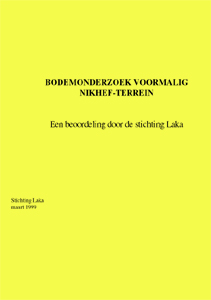 Bodem onderzoek voormalig NIKHEF-terrein
Bodem onderzoek voormalig NIKHEF-terrein
(March 1999)
in Dutch only
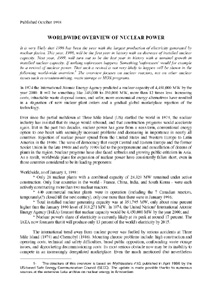 Overview of nuclear power status [English]
Overview of nuclear power status [English]
(November 1998)
This worldwide country by country overview focusses solely on nuclear reactors
 Risico's van het militaire gebruik van verarmd uranium
Risico's van het militaire gebruik van verarmd uranium
(June 1998)
in Dutch only
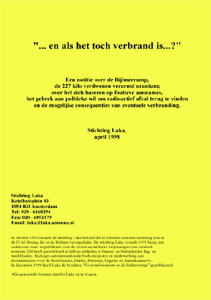 "....en als het toch verbrand is...?"
"....en als het toch verbrand is...?"
(April 1998)
in Dutch only
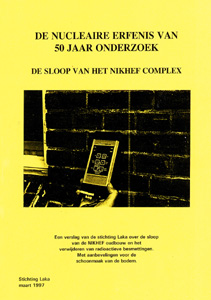 De nucleaire erfenis van 50 jaar onderzoek. De sloop van het NIKHEF-terrein
De nucleaire erfenis van 50 jaar onderzoek. De sloop van het NIKHEF-terrein
(March 1997)
in Dutch only
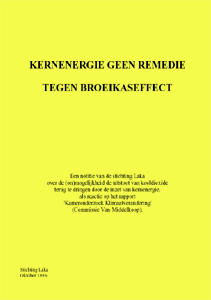 Kernenergie geen remedie tegen broeikaseffect
Kernenergie geen remedie tegen broeikaseffect
(October 1996)
in Dutch only
 Steps to a nuclear-free world [English]
Steps to a nuclear-free world [English]
(January 1995)
From mid-January to mid-October 1995, hundreds of people walk through a large part of Europe for a nuclear free world. The walk is being organised by For Mother Earth and starts in Brussels and will end in Moscow. Reasons for the walk: It is exactly 50 years ago that the dawn of the nuclear age broke. 25 Years ago a treaty came into being, aimed at stopping the spread of nuclear weapons: the Non-Proliferation Treaty. It is 40 years after the first call for a Comprehensive Test Ban Treaty (CTBT) by President Nehru of India. October 12, 1995 is the International Day for Solidarity with Indigenous People. The report gives an up-to-date overview of all these issues. And more...
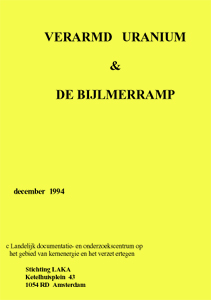 Verarmd Uranium en de Bijlmerramp
Verarmd Uranium en de Bijlmerramp
(December 1994)
in Dutch only
 Het dossier kernenergie kan gesloten worden
Het dossier kernenergie kan gesloten worden
(April 1993)
in Dutch only
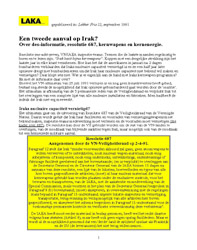 Een tweede aanval op Irak? Over des-informatie, resolutie 687, kernwapens en kernenergie
Een tweede aanval op Irak? Over des-informatie, resolutie 687, kernwapens en kernenergie
(September 1991)
in Dutch only
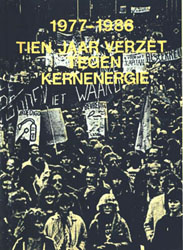 1977-1986 Tien jaar verzet tegen kernenergie
1977-1986 Tien jaar verzet tegen kernenergie
(April 1987)
in Dutch only.
(selected) articles and press-release
'Status report on HEU/LEU transition of reactor fuel and target material of medical isotopes producing research reactors' (februari 2011) [English]
Since 1992 the US restricted its high-enriched uranium (HEU) exports to encourage other countries to convert civilian facilities to low-enriched uranium (LEU), which can't be used directly to make nuclear weapons. What is the state of affair converting reactors for the production of medical isotopes.
[pdf]
'Medical Isotope Production. Conversion from HEU to LEU based production and alternative methods' (February 2009) [English]
Since 1992 the US restricted its high-enriched uranium (HEU) exports to encourage other countries to convert civilian facilities to low-enriched uranium (LEU), which can't be used directly to make nuclear weapons. Instead in mid 2005 Congress passed the Energy Policy Act of 2005, which includes provisions relaxing restrictions on HEU exports for medical isotope production. The primary beneficiaries of the new law are producers of medical radioisotopes.
(pdf)
'Thorium nuclear fuel cycle: an alternative' (February 2008) [English]
For fifty years, the nuclear industry is looking for thorium as an alternative for uranium-based nuclear power. The main reasons are aid to be the abundance of thorium and the fact that the thorium-base cycle is less proliferation-sensitive than uranium. But is this really the case: can thorium be an alternative for uranium?
(pdf)
'In time of hype, telling the truth becomes a revolutionary act' (September 2007) [English]
The war of words over Iran's nuclear ambitions has escalated recently, with the French Foreign Minister Bernard Kouchner warning the world to "prepare for the worst, and the worst is war" (although later withdrawn) and especially a spate of articles in the US print media targeting ElBaradei and the IAEA after agreeing on a time-schedule with Iran to answer outstanding questions about Iran's nuclear program. This article examines the latest developments and analyses the role of the IAEA and ElBaradei
(pdf)
UF6-transporten in Nederland - export naar Rusland (mei 2007)
[pdf]
Monopolizing the fuel supply: The GNEP, GNPI and Fuel Bank initiatives (March 2007) [English]
One of the ways the nuclear society wants to 'solve' the problem of proliferation is to monopolize the nuclear infrastructure and technology and restrict access to nuclear fuel. Internationally several initiatives are currently being developed.
But all these initiatives are undermining Article IV of the Non proliferation Treaty-- and with that the entire NPT, because Article IV is the 'carrot' in the NPT-'stick'. Even if proposals to limit the accessibility of technology and nuclear fuel could somehow be brought into force, it would still not result in eliminating the proliferation risks associated with a (foreseen) large expansion of nuclear power.
[pdf]
UNEP: No uraniumweapons in Lebanon (January 2007) [English]
The long awaited report by the UNEP about the environmental consequences of the Libanon-war is published. The investigation has not found any evidence that (depleted, natural or enriched) uranium weaponry by the Israeli Defense Forces have been used. The attention was especially focussed on soil samples from a crater in the neighborhood of Khiam in southeast Lebanon. Reports and rumours went the rounds in the international media during and after the 2006 war regarding the use of depleted uranium and/or uranium weapons at this specific site at Khiam.
[html]
Did Israel use experimental bombs with (enriched) uranium in Lebanon? (december 2006) [English]
At the end of October The Independent (UK) reported on the possible find of enriched uranium in a bomb crater at Khiam (Lebanon). In the frontpage article Dr Chris Busby from the European Committee on Radiation Risks (ECRR) speculates on the use of an experimental uranium bomb by the Israeli Defense Forces (IDF).
Is this the smoking gun of what the 'believers' in the anti-uranium weapons movement have always believed, namely that uranium is used in large guided munitions; or do we have to deal here with constructed proof caused by a state of mind, called tunnel vision?
[html]
[pdf]
UNEP: No evidence of uranium munitions used in Lebanon (November 2006) [English]
UNEP reports that there investigation teams have not measured radiation levels higher than the background level in Lebanon. In addition, based on laboratory analyses of samples, UNEP excludes the military use of DU or use of uranium with another composition of isotopes in Lebanon.
[html]
Depleted Uranium (DU) munitions used in Lebanon? (October 2006) [English]
After a fact-finding mission to Lebanon late September, the Laka Foundation concludes: there is no reason to believe that DU weaponry has been used in Lebanon by the Israeli Defence Forces (IDF) during the July/August 2006 war.
[html]
Desinformatiecampagne dwarsboomt strijd tegen uraniumwapens (april 2006)
[html]
[pdf]
De omvang van de kernramp in Tsjernobyl volgens het IAEA (april 2006)
[html]
[pdf]
Review: PSR report on Depleted Uranium health issues (december 2005) [English]
A review of the new report on health effects of depleted uranium. The report is written by the Physicians for Social Responsibility.
[html]
[pdf]
Kernenergie: problematiseren en politiseren (augustus 2005)
[html]
[pdf]
The Medical Investigation into the Bijlmermeer Aviation Disaster and depleted uranium (october 2003) [English]
A total overview on DU and the aftermath of the 1992 plane crash in Amsterdam Southeast with regards to the medical investigation.
[html]
[pdf]
Verarmd Uranium: Vragen en antwoorden (augustus 2003)
[html]
[pdf]
Ziek van de oorlog. Recensie: Met stille trom (november 2002)
[html]
[pdf]
Het sprookje van de veilige reactor: HFR-hoorzitting gemeente Zijpe (november 2002)
[html]
Een radioactief kraakpand in Wageningen? (maart 2002)
[html]
De radioactieve bron op het ITAL-terrein (oktober 2001)
[html]
UNEP rapport over verarmd uranium in Kosovo (maart 2001)
[html]
Dutch commission for disposal of radioactive waste publishes final report (februari 2001) [English]
The Dutch commission on the final storage of radioactive waste proposes to store the high level waste in an underground repository. Laka responds and critisises the decision.
[html]
Cora's keus voor ondergrondse opslag kernafval voorbarig (februari 2001)
[html]
Sluiting HFR Petten? Alternatieve productie-methoden Technetium-99m (juli 2000)
[html]
[pdf]
De link tussen kernenergie en kernwapens (voorjaar 2000)
[html]
Discussion storage nuclear waste requires new set up and phase-out of nuclear energy (januari 2000) [English]
There is no solution for the storage of high-level and long-living radioactive waste. The production of nuclear energy and the generation of new waste has to be stopped. All the knowledge has to focussed on research and development to diminish the threat.
[html]
Discussie opslag kernafval vergt nieuwe opzet en einde kernenergie (januari 2000)
[html]
Nuclear waste and ethics are inconsistent (januari 2000) [English]
Production and storage of nuclear waste is ethically unjustifiable and not consistent with sustainable development. Press release
[html]
Kernafval en ethiek gaan niet samen (januari 2000)
[html]
ECN, NRG en nucleair onderzoek (october 1999)
[html]
[pdf]
Factsheet: levensduurverkorting een illusie? (november 1998)
[html]
[pdf]
Persbericht: Levensduurverkorting radioactief afval een illusie (november 1998)
[html]
[pdf]
Kernenergie heeft geboden kansen niet waargemaakt (juli 1997)
[html]
A future for the HTR? (januari 1997) [English]
Was it a good idea to work on a 30 year old concept without having new ideas?
[html]
Het einde van de HTR? (januari 1997)
[html]
De HTR. Een veilige kernreactor? (juli 1996)
[html]
De Russische erfenis van de Koude Oorlog (juni/juli 1996)
[html]
Stralingsexperimenten VS. Een halve eeuw atoombeschaving; een halve eeuw barbarij (juni/juli 1995)
[html]
Country status reports (jan/oct 1995) [English]
An up-date overview of the regarding nuclear policy and facilities in countries en route of the Walk for a Nuclear Free World.
[html]
Modificatie Borssele: tot elke prijs (december 1994)
[html]
Dodewaard 25 jaar: Neerlands oudste kerncentrale (mei 1994)
[html]
Dodewaard moet dicht! (nov/dec 1992)
[html]
Voedselbestraling heeft eigenlijk alleen maar nadelen (augustus 1992)
[html]
